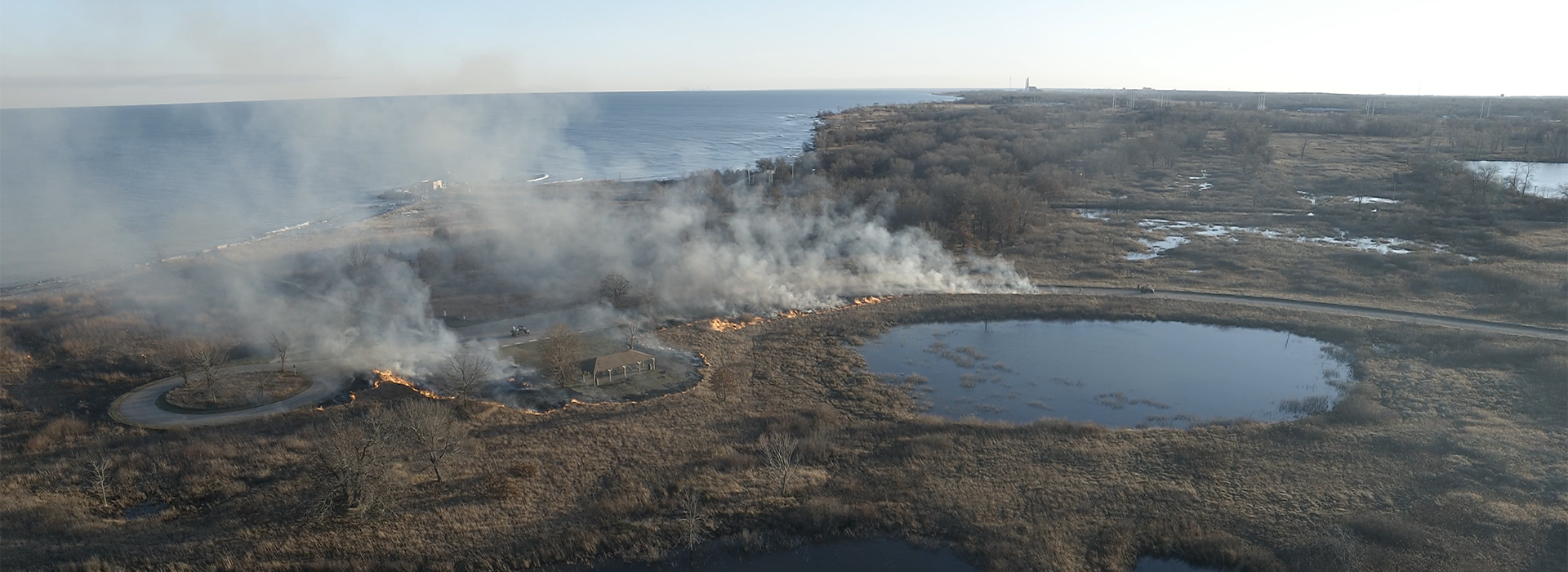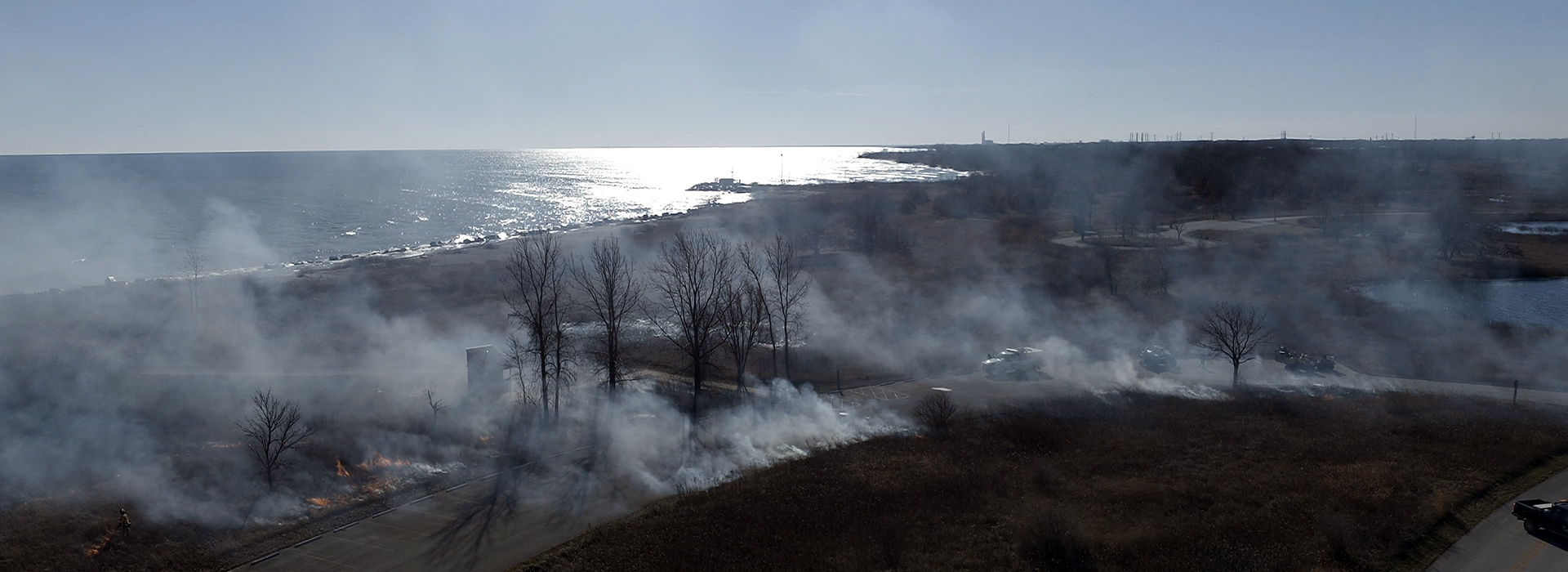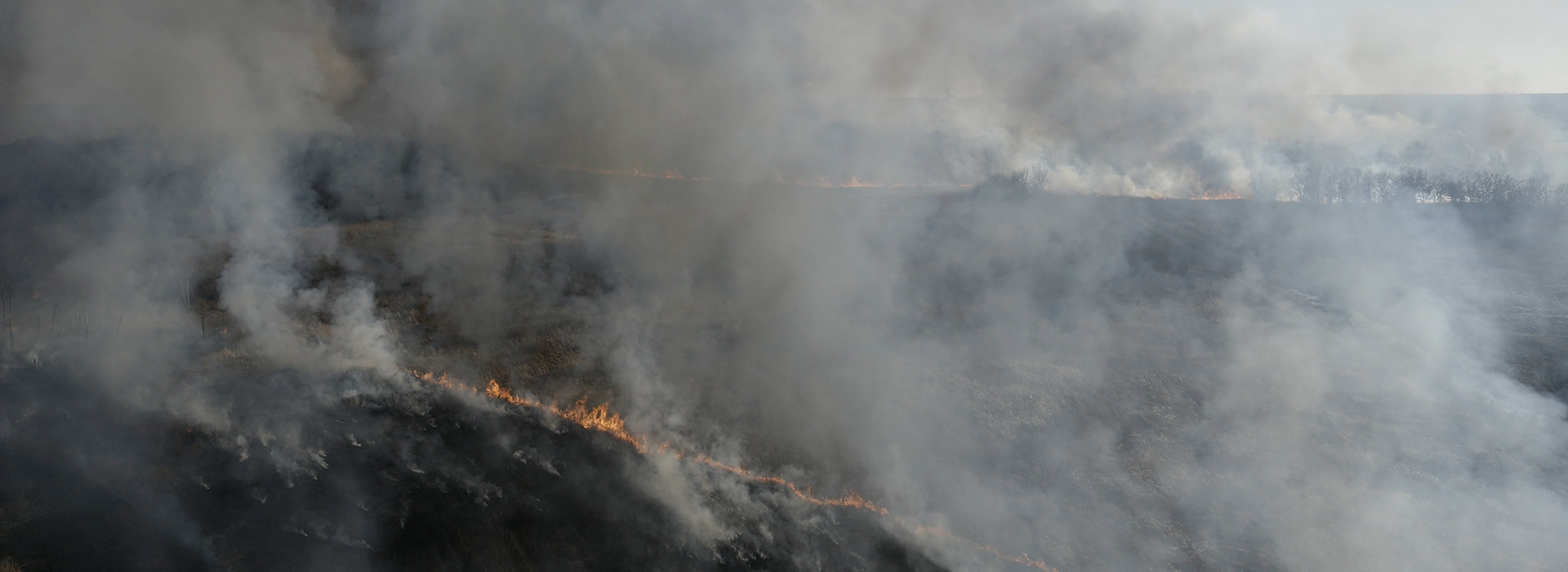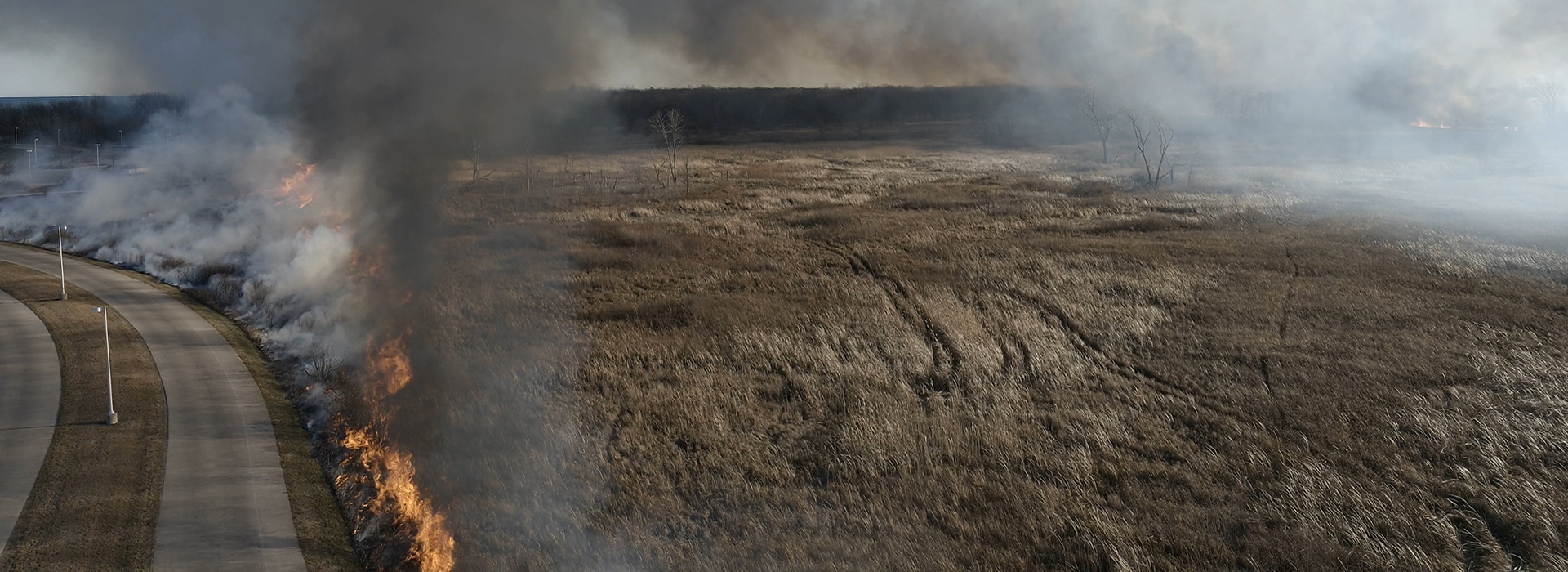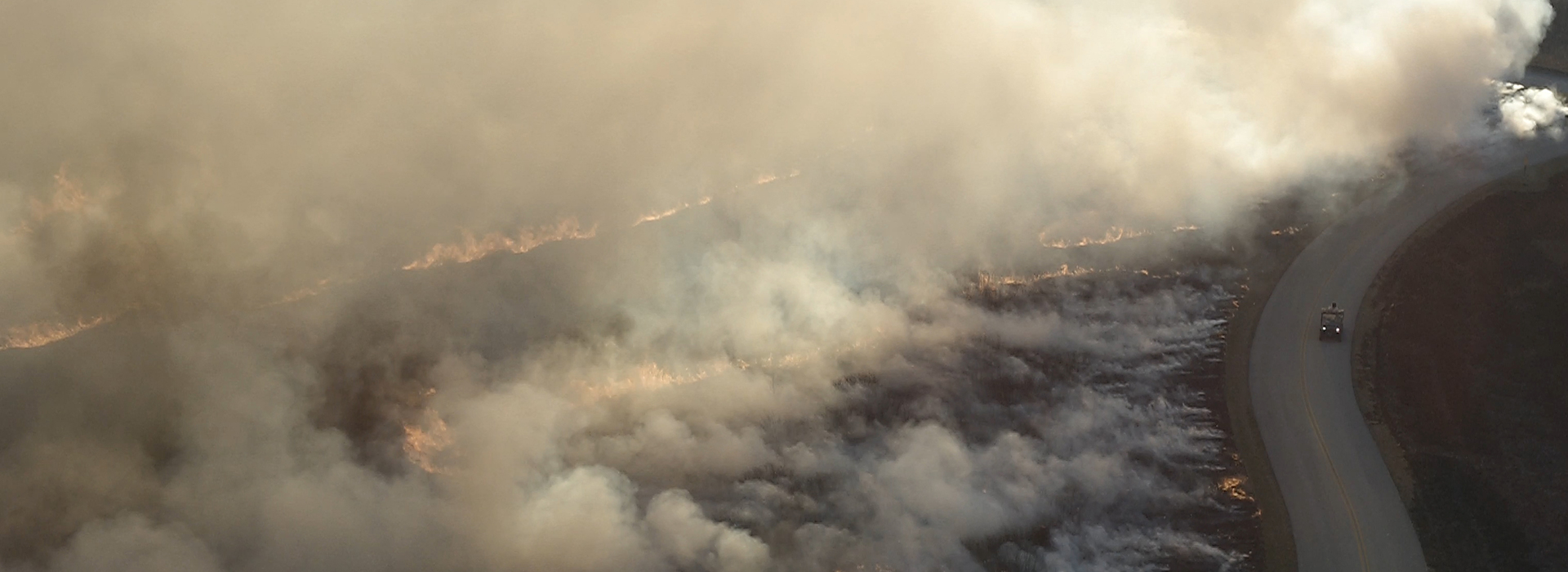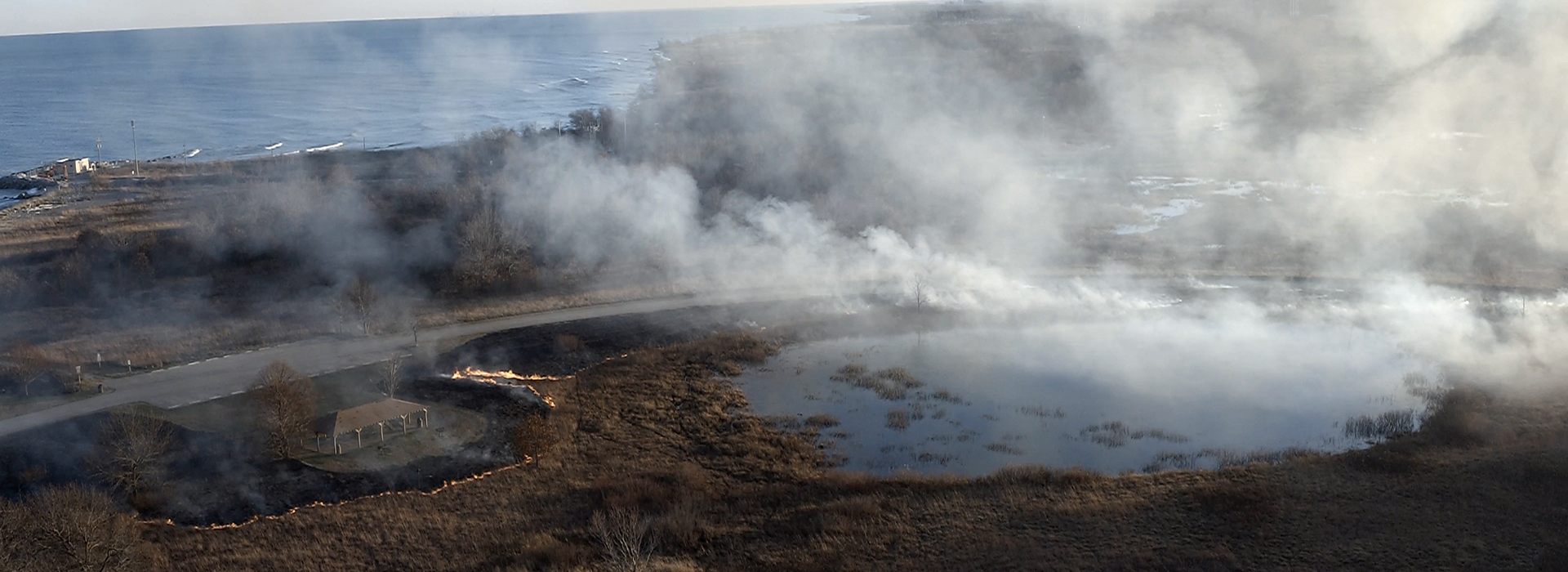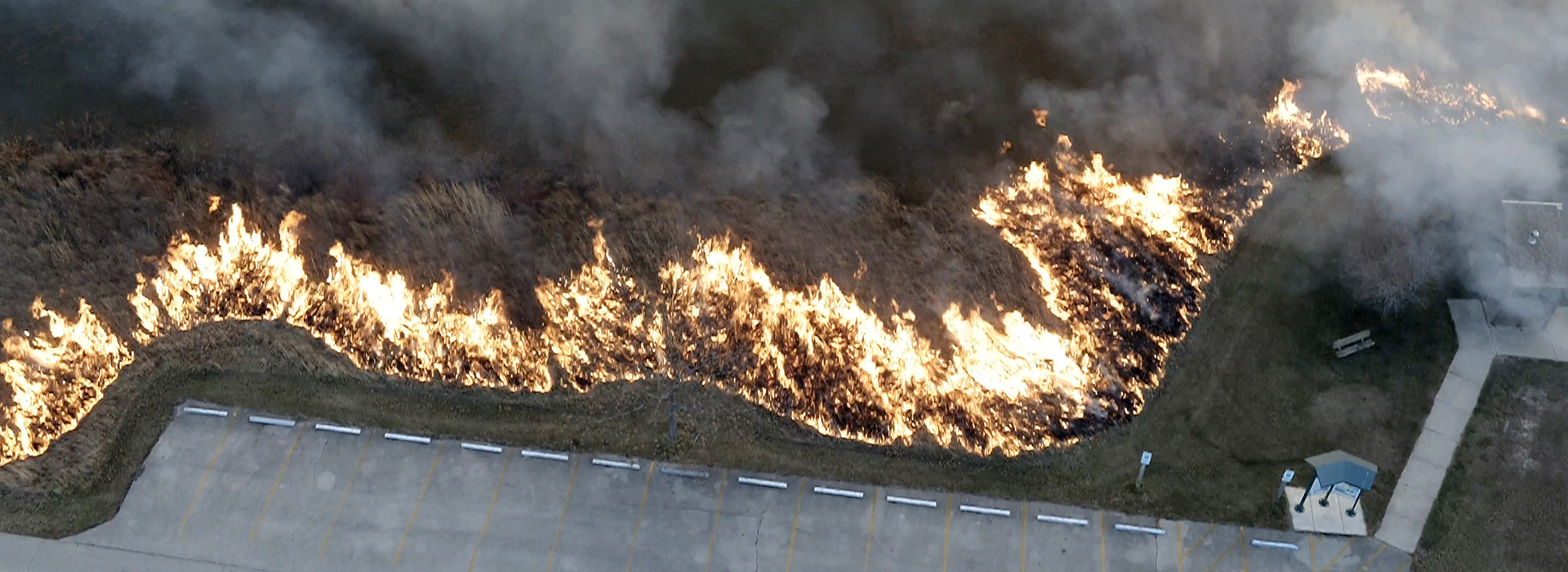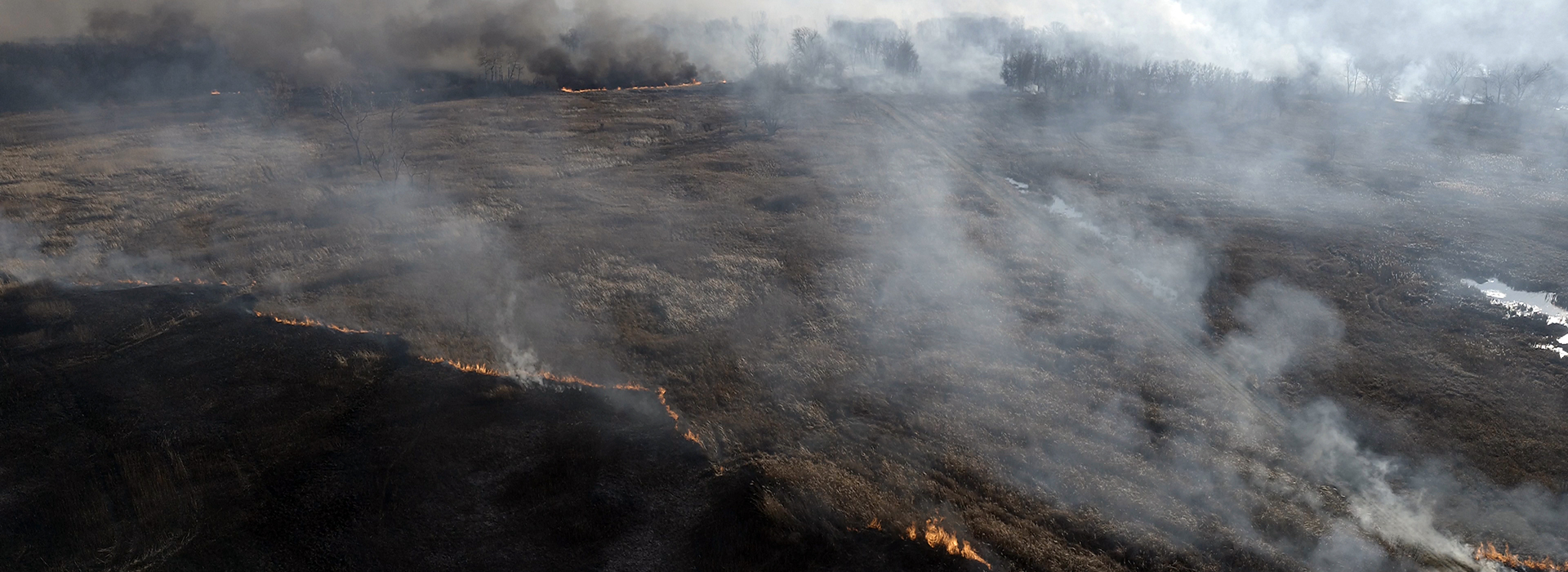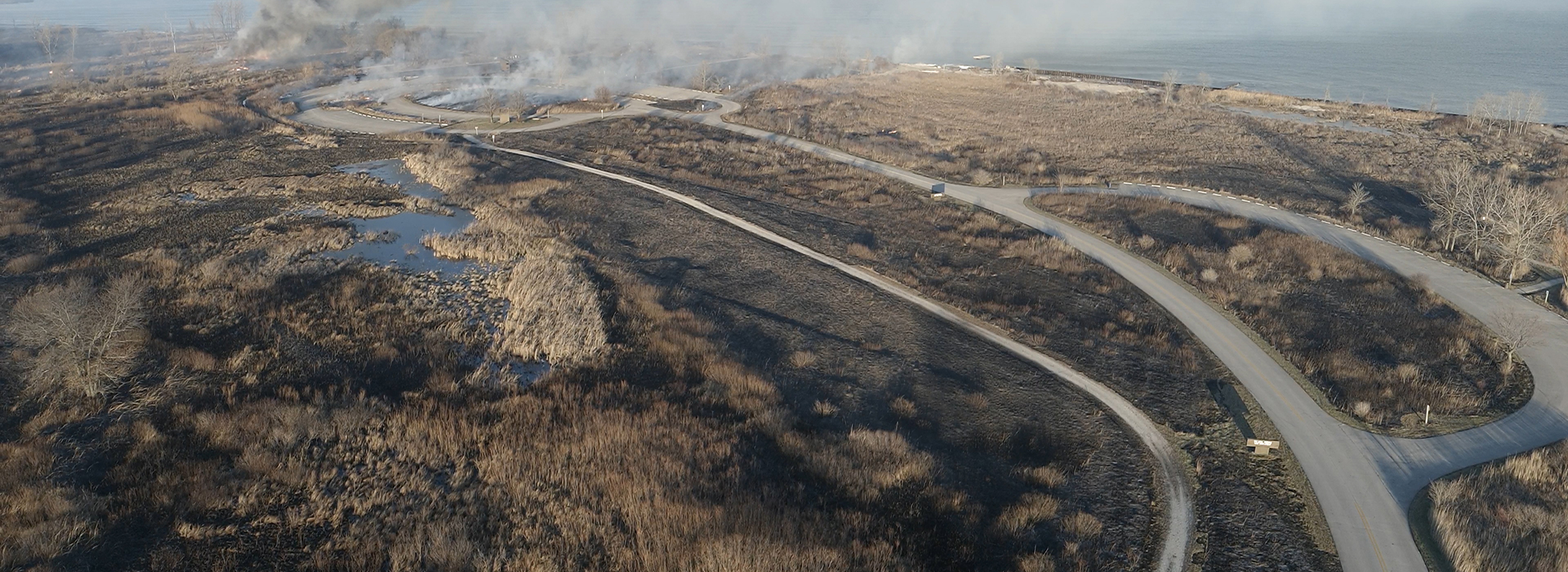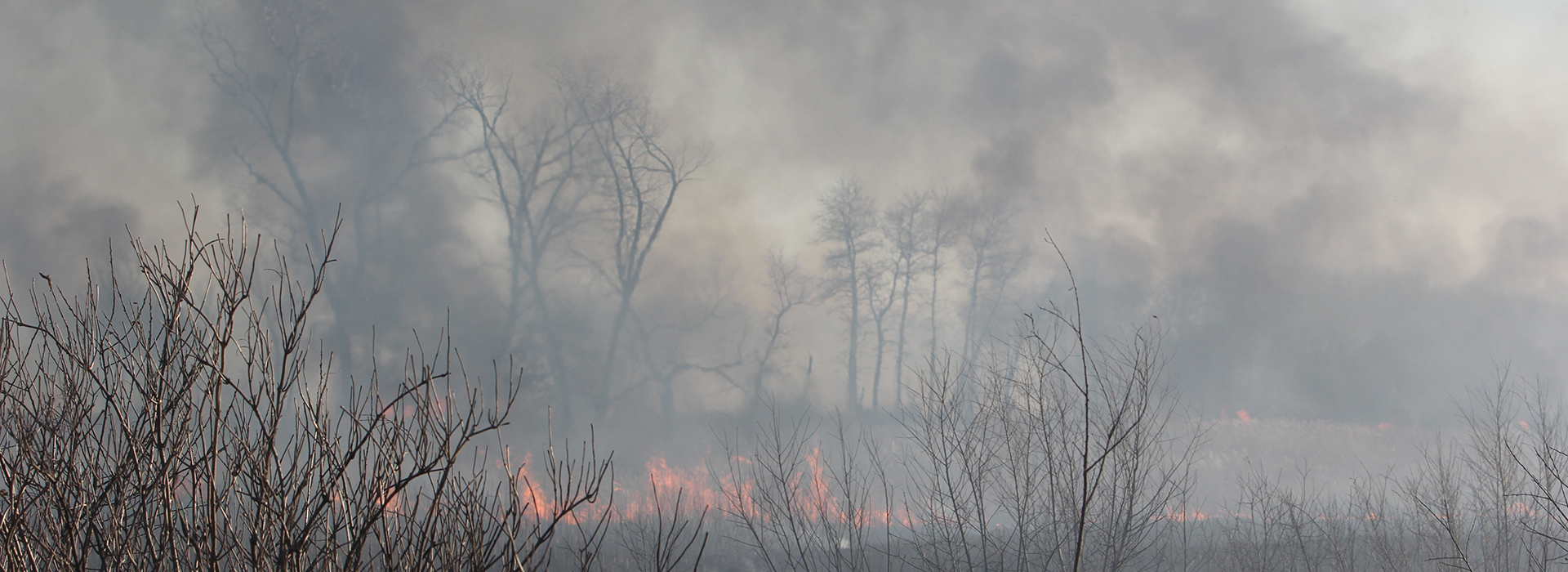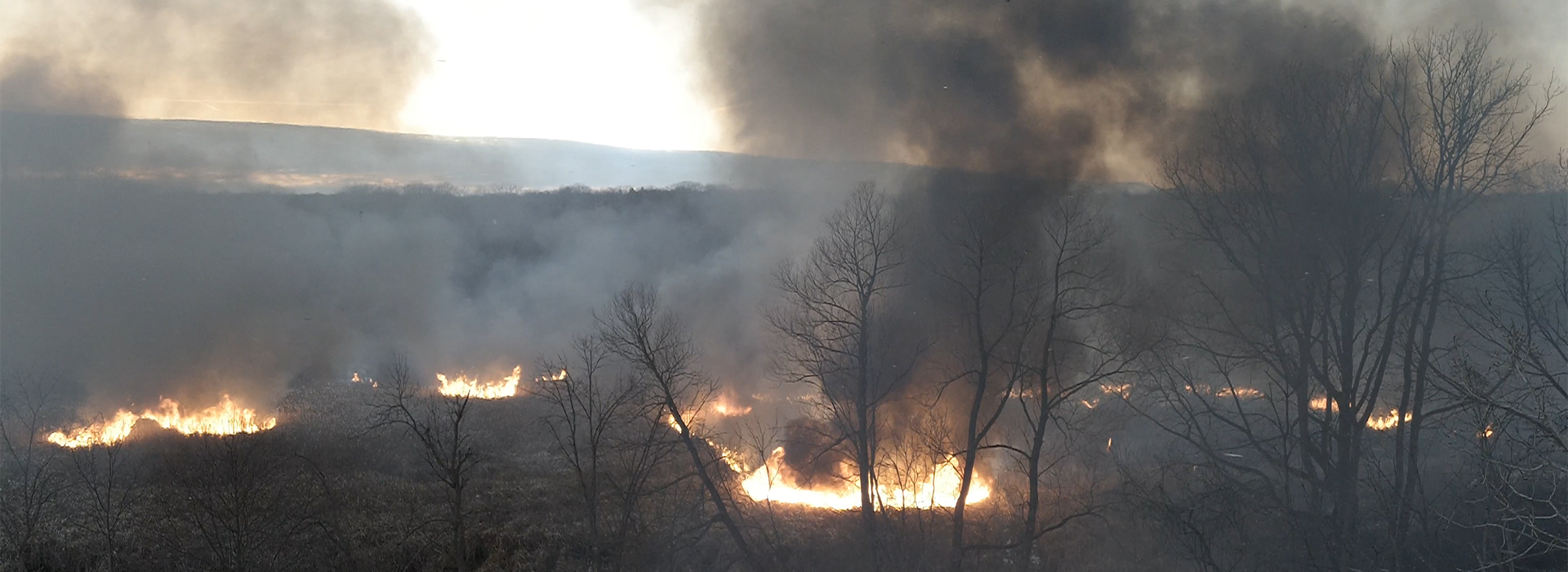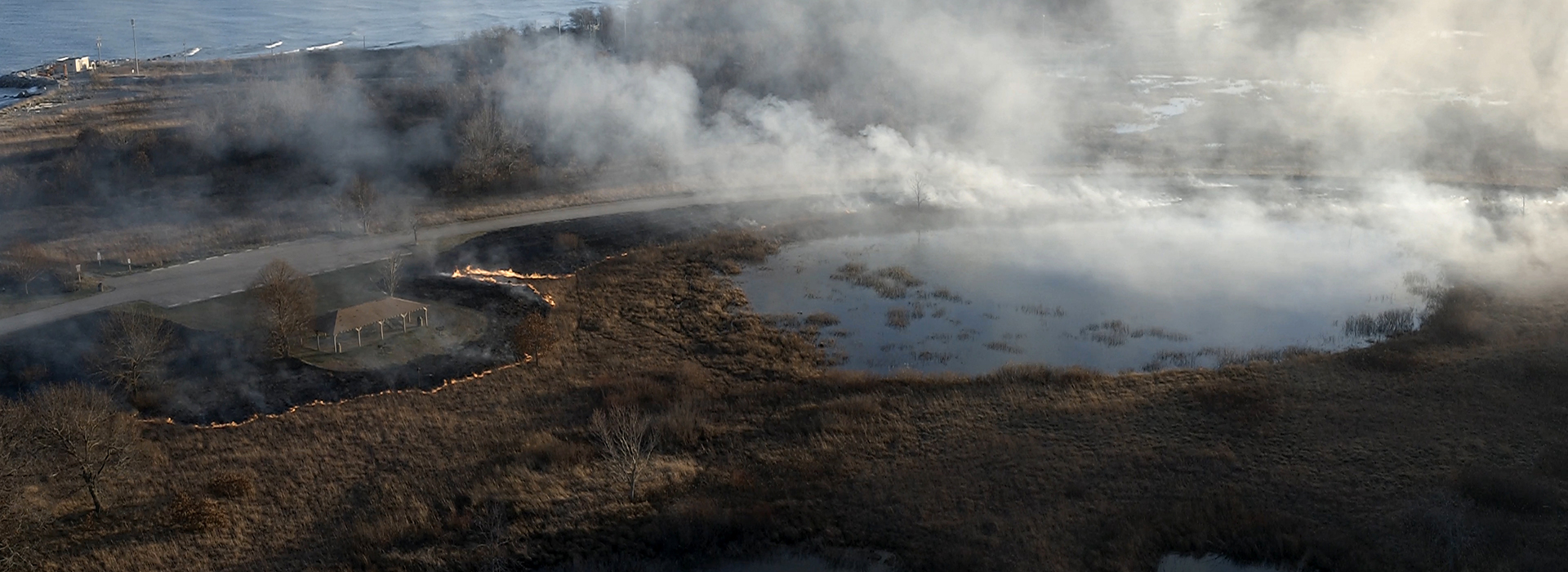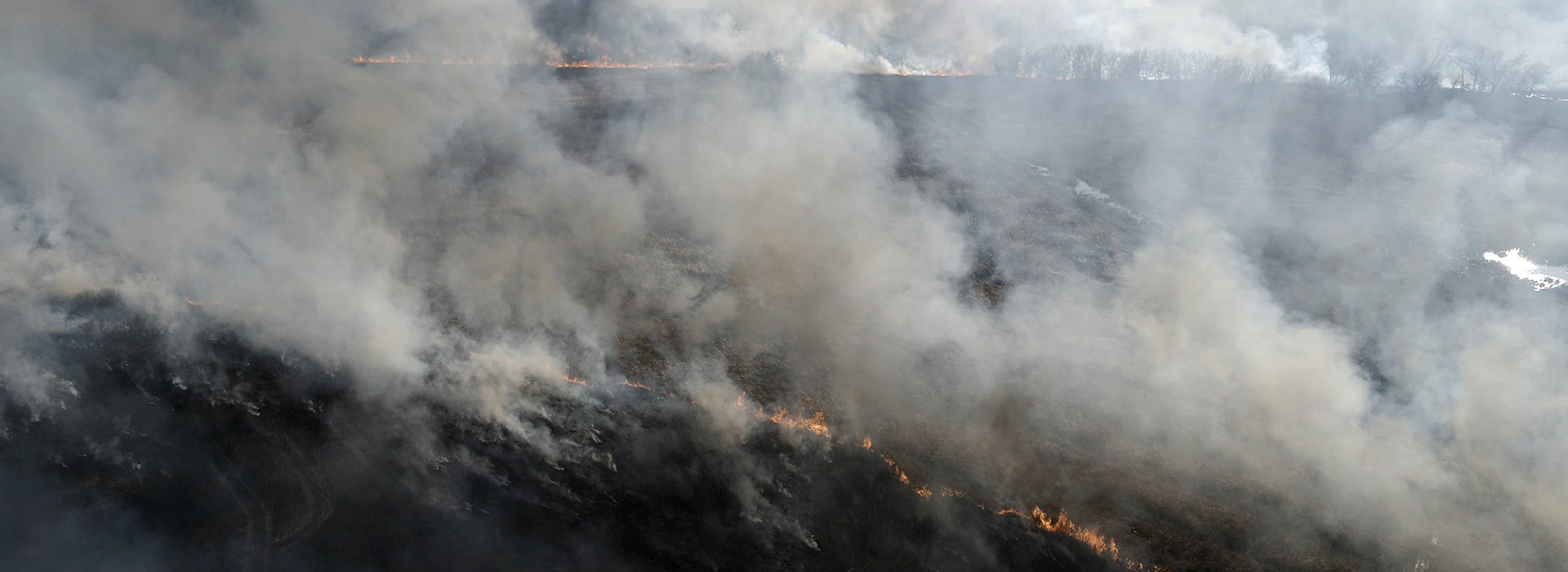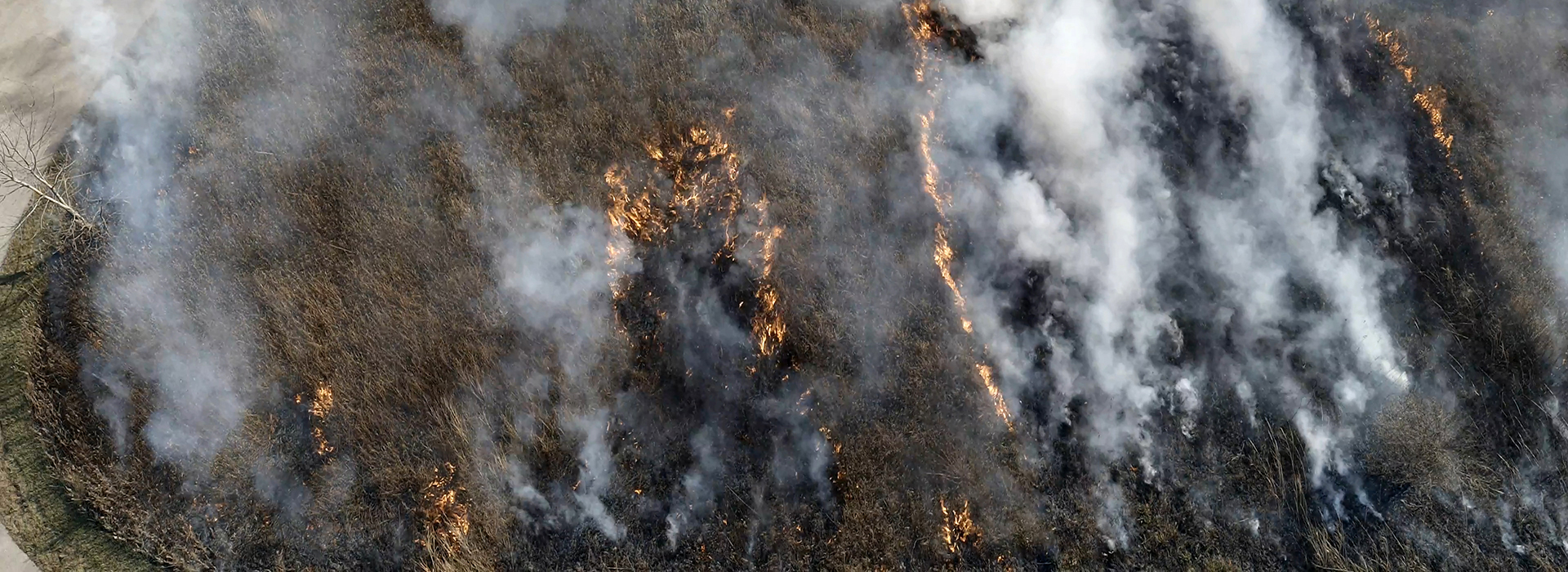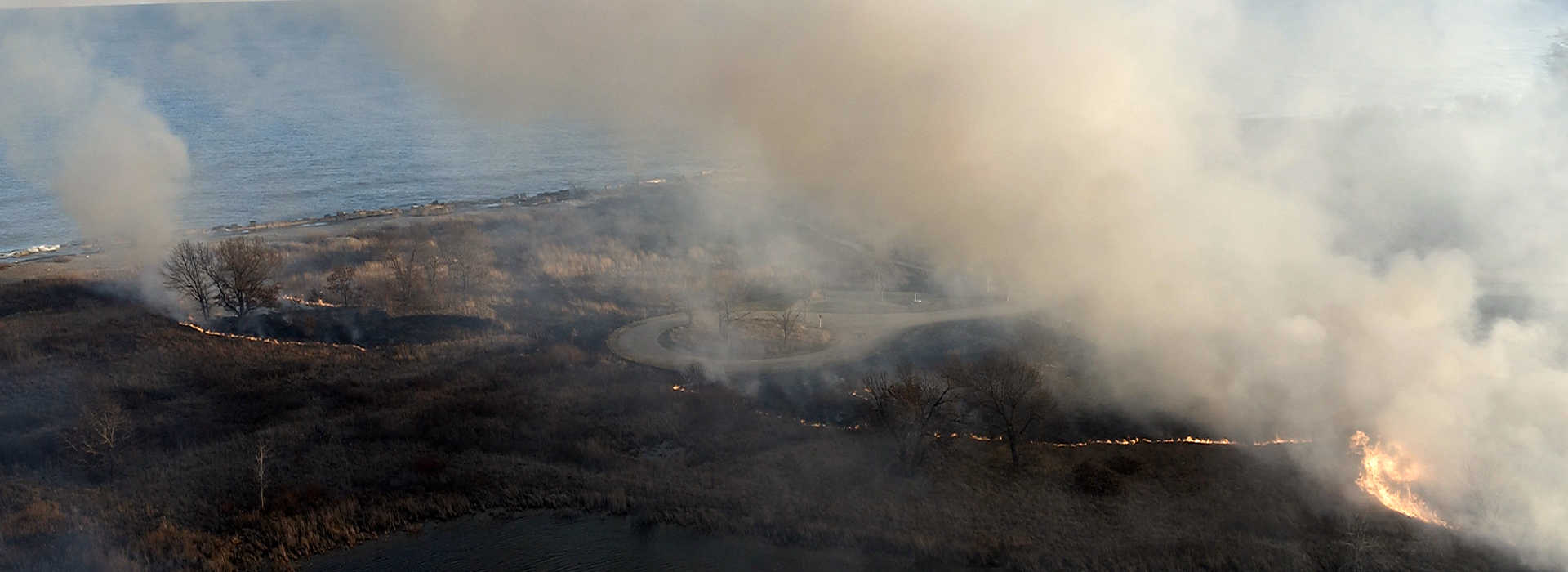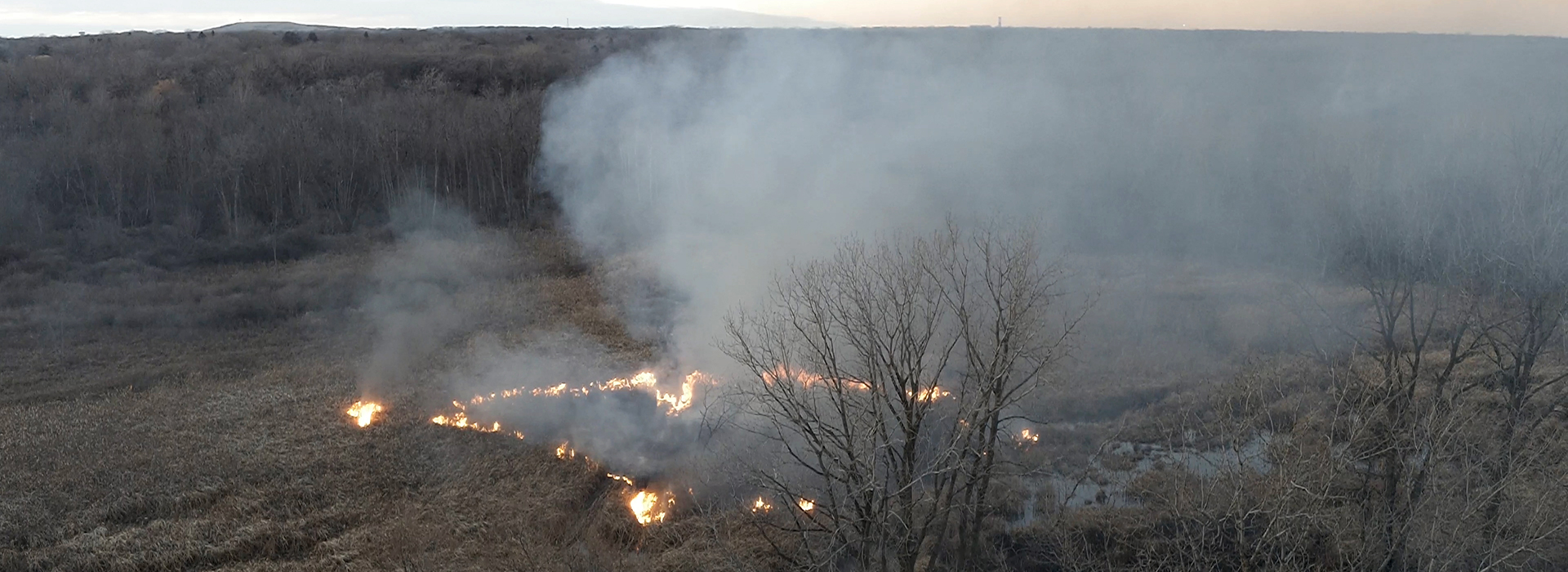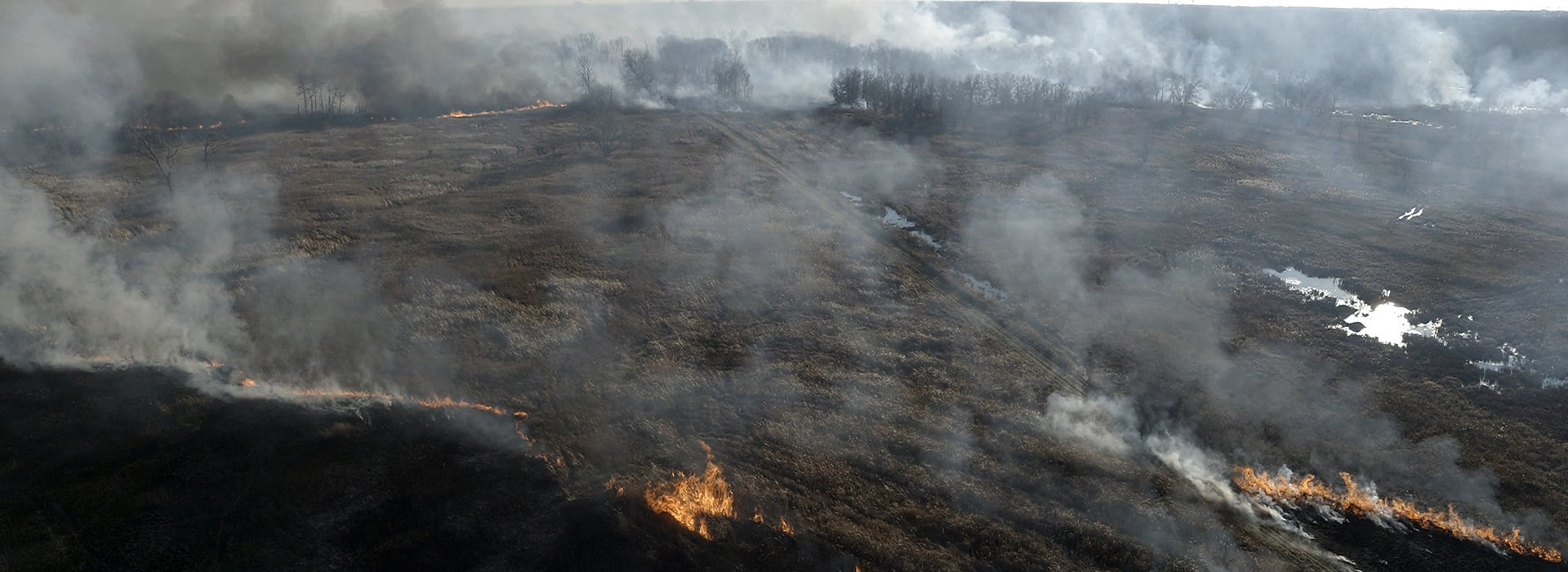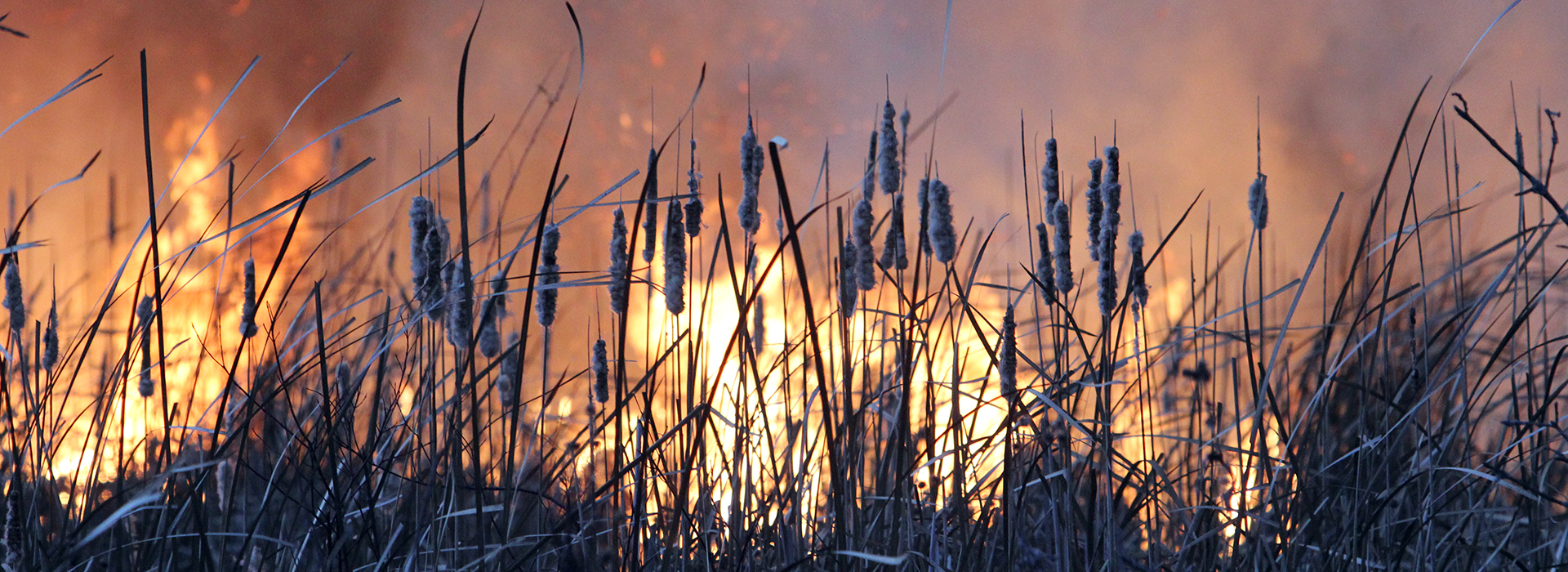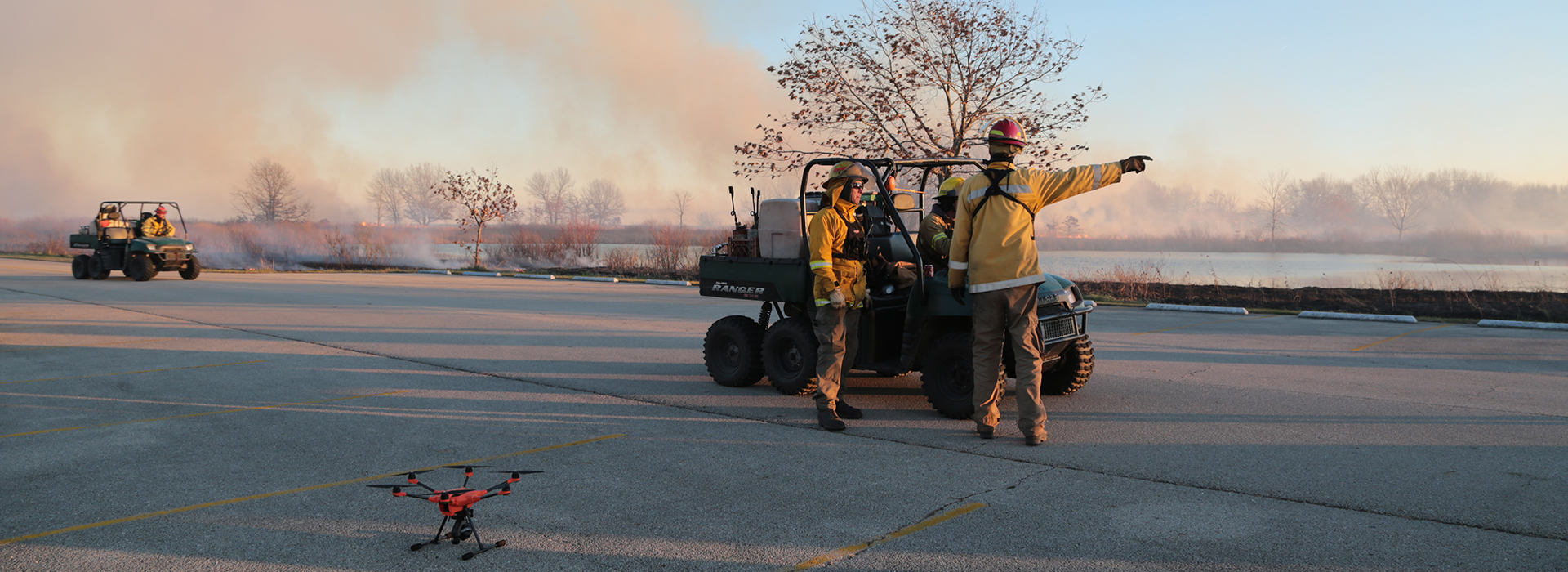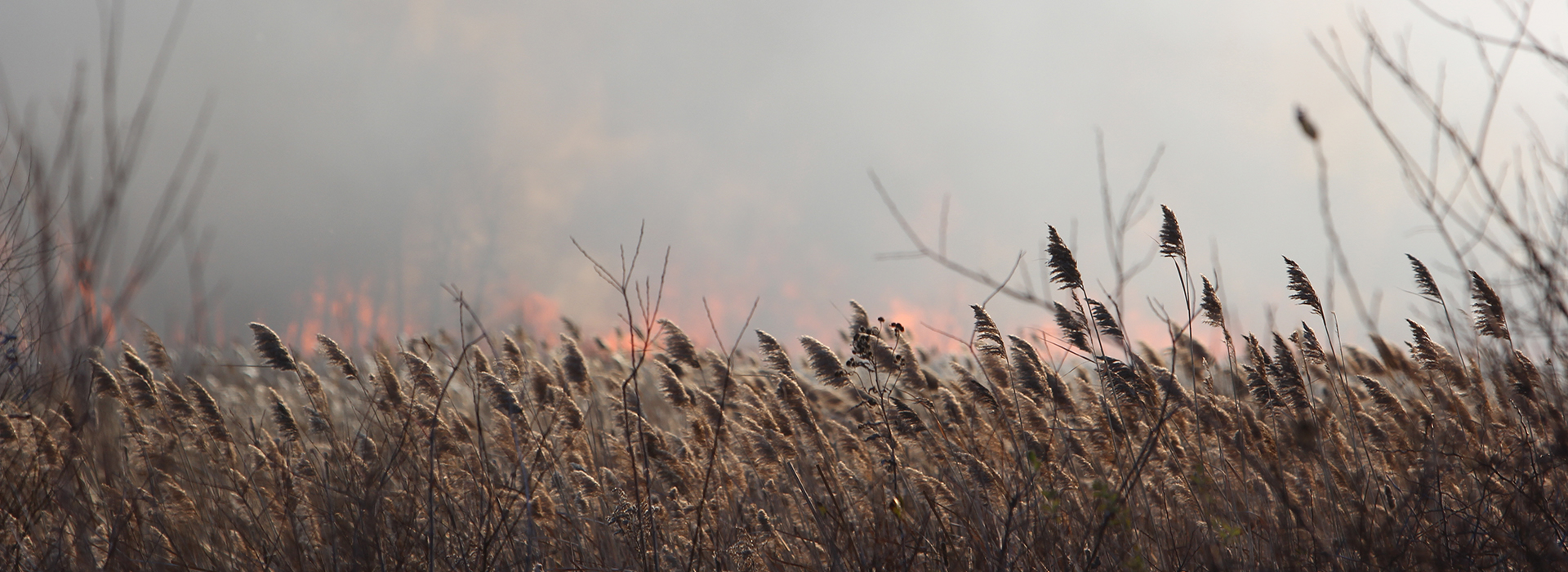Naturally occurring fires throughout the Midwest ultimately shaped the distinctive prairie and oak savanna ecosystems we now enjoy in Illinois. These habitats are adapted to sustain periodic fires and even depend upon them. With their deep taproot systems or thick bark, native plants can survive intense heat. Invasive, non-native plants often don’t have the adaptations that allow them to quickly regrow after fire passes through.
Prescribed fires mimic nature’s fires of the past and are the best tool—cost-effective, efficient, and ecologically sound—to stimulate growth of native vegetation and to control invasive plant species in natural areas. Fires release nutrients into the soil and the blackened surface captures the sun’s energy and increases soil temperatures, promoting earlier and more abundant flower production and subsequent seed production in native plants. In addition to the plant communities benefiting, animals take advantage of the enhanced plant growth and increased flowering, resulting in healthy habitats for insects, birds, mammals, and other wildlife.
Drone Arrival was tasked with capturing aerial drone video and images from prescribed burns conducted by Illinois Department of Natural Resources (IDNR) at several Nature Preserves. We used the Yuneec H520 drone equipped with the E90 camera, and it provided the right combination of maneuverability and wind resistance. The H520 UAS performed flawlessly with continuous recharging and swapping of the batteries in the field. Footage allowed biologists to assess burn patterns and intensity that allowed a better understanding of the fire impacts. They also were able to review fire behavior during the burn and to assess crew safety and evaluate ways to improve ignition techniques.
Prescribed fires are conducted when temperature, humidity, and wind conditions, combined with fuel types, are appropriate to ensure that the fire and smoke can be controlled yet can generate enough heat to be effective. IDNR burn managers who lead burn crews are certified and trained to federal standards. A successful prescribed burn operation requires complex planning, coordination, teamwork, experience, and skills in many interrelated areas—all of these were clearly on display at the controlled burns we filmed and photographed. The aerial footage captured with the H520 drone will assist with documentation and training within IDNR and similar agencies in other states.
